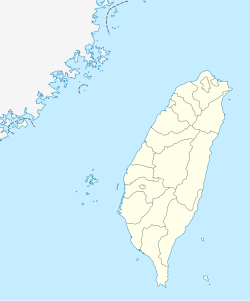|
Yilan Airfield
Yilan Airfield (ICAO: RCMS) (also known as Giran Airfield) is an abandoned airfield located in Yilan, Taihoku Prefecture, Taiwan. This airport is not to be mistaken with Yilan Airport (IATA: YLN), an abandoned airport in Yilan County, Mainland China. HistoryYilan consisted of 3 airfields, south, north and a west airfield which was considered “secret”. The southern airfield was known as Giran Airfield. In 1925, a reconnaissance aircraft flew from Hualien to Yilan, landing at the Jinliujie Army Training Ground. The pilot briefly rested before returning back to Hualien, making the event as the first time Yilan residents saw an “iron bird’ land. It also served as a psychological show of force by the colonial authorities.[1] Giran Airfield was constructed in 1936 provided by demanding labour of students from the nearby agricultural college. The airfield was mostly built using hands, and little to no equipment and machines were used. The airfield was completed by 1938 with compacted earth reinforced runways with stone rollers, which was prone to flooding from the nearby Yilan River. Shortly after the completion, torrential rainfall submerged the runway, which underwent significant repairs and resumed operations by the end of 1938. From 1936 to 1938, Japan Air Transport served a route to this airfield.[2] In 1939, the airfield was acquired by the Kuomintang Government (KMT), and the airfield was operated as a weather observation station, with a nearby meteorological observation building.[3] On June 1939, the control tower was built, and the airfield was expanded to an area of 0,27 square kilometers, which was relatively small. On January 1940, a weather observation facility was established, which included a three-story wind observation tower constructed using reinforced concrete.[1] World War IIOn September 1943, Giran Airfield was requisitioned for military usage, which followed the Battle of Midway’s defeat in June 1942. The north airfield was reserved for airfield parking, while Giran Airfield was heavily utilized by kamikaze pilots. There were 14 camouflaged hardened aircraft shelters to concealed aircraft, as it was a popular bombing location by the United States Army Air Forces (USAAF). As the war progresses, students and locals were recruited to construct aircraft decoys using the nearby bamboo and install them on the wrong side of the airfield. However, this backfired, and allied pilots quickly noticed as there were no black smoke.[3] Towards the end of the Pacific War, the Kamikaze crew were stationed inside dormitories of the agricultural college, forcing the students to sleep in make-shift huts or inside the hall. Over 2,500 pilots had flown from the airfield to suicidal missions against the Allied forces.[3] In 1944, a West Airfield, known as the secret airfield was constructed.[1] Post-war usageAfter the war in 1945, Giran Airfield was abandoned by the Japanese forces, however, the KMT quickly acquired the airfield when they arrived to Taiwan. The northern and secret airfield were dismantled. Giran Airfield was used as an emergency landing ground, and also as a weather station. The airfield was renamed to Yilan, was paved by 5000 feet, and maintenance facilities installed approximately on the north-eastern side. Yilan Airfield was later handed over to the Taiwanese navy, which stationed one PC-3 Orion aircraft on the airfield as an airborne early warning aircraft. There was plans by the Navy to expand and upgrade the airfield’s capabilities, however, it faced issues from the local government and nearby residents. These attempts were abandoned, and military was withdrawn along with the airfield closing down in 1973.[3] Current usageThe site of the former three airfields were repurposed and their current usage are as follows:
RaidsThe following raids held on Giran Airfield.
References
|
||||||||||||||||||||||||||||||||||||||||||||||





